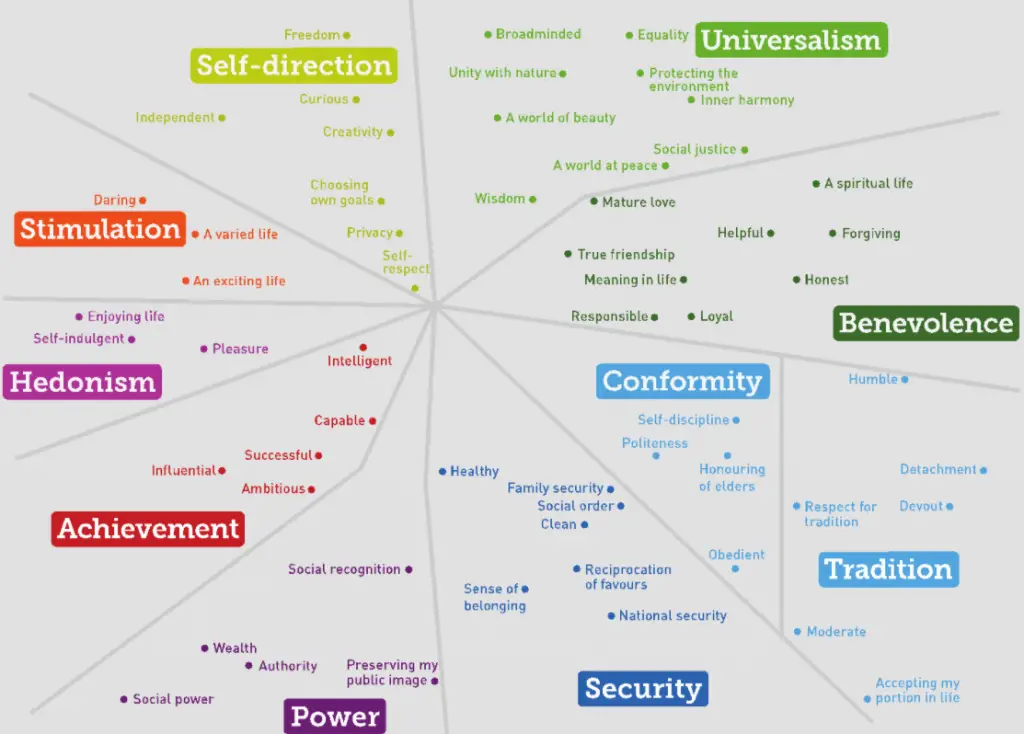Why does blackmail work? Blackmail works because it uses a small piece of ultra sensitive information to compel a person to act. How much would you pay to keep your friends from seeing your internet history, what your cell camera records when it is supposedly off, or that picture of my pink pony you look at so frequently not shown to someone? Finding blackmail is like finding a guarantee that a person will do what you say.
Blackmail is like knowing the answer to the question: What are people’s greatest desires?
So what does blackmail have to do with persuasion? Well, just like blackmail, if your logical arguments are failing to persuade, it is probably because you are using the wrong type of information.
How do you find the right mental leverage? Do you have to use someone’s dirty secrets? Well, no. People hand out information that can be used to motivate them to act all the time. You just need to know what to look for and how to nudge them into telling you.
Table of Contents
Question: How Do You Discover People’s Greatest Desires?
Answer: You discover people’s greatest desires by first understanding what all humans want in general. There are at least 10 things. Then You find out which of those 10 desires your target has a preference for. Lastly you look to see if that person is experiencing some sort of pain because that desire isn’t fulfilled. If you make it through all three steps, you have discovered a person’s greatest desire at that moment. For more information keep reading.

That is what we are going to cover today, a three step process that will help you gather the right information from anyone, so you can maximize your argument’s ability to get people to act.
The first step is to understand the details of how all humans are motivated.
Why does it matter that we understand the details of human motivation? Can’t we just tell people how our way of doing things reduces pain?
Well yes and no. The true power of an argument comes because it addresses a fundamental human desire. If you craft your pitch to focus on a surface desire like money, you limit the mental blackmail effect. You are simply leaving leverage on the table by selecting something that is a diluted way of motivating the brain to act.
People want money, not because it is a basic desire, but because of what it gives them. Money is sought after because it gives people things like significance, control, independence, and cookies. These are primary human desires, and they are dictated mostly by genetics but also a bit by our environment. So what are all the primary desires?
There have been many studies that have classified human motivation. I’ve selected one study that is particularly straight forward and reliable so you can get started today. Let’s take a look at the things that motivate people’s brains to act.

- Self-Direction. Independent thought and action; choosing, creating, exploring.
- Stimulation. Excitement, novelty, and challenge in life.
- Hedonism. Pleasure and sensuous gratification for oneself.
- Achievement. Personal success through demonstrating competence according to
social standards. - Power. Social status and prestige, control or dominance over people and resources.
- Security. Safety, harmony, and stability of society, of relationships, and of self.
- Conformity. Restraint of actions, inclinations, and impulses likely to upset or harm others and violate social expectations or norms.
- Tradition. Respect, commitment, and acceptance of the customs and ideas that traditional culture or religion provide the self.
- Benevolence. Preserving and enhancing the welfare of those with whom one is in frequent personal contact (the ‘in-group’).
- Universalism. Understanding, appreciation, tolerance, and protection for the welfare of all people and for nature.

As you’ve probably noticed there are groupings in this diagram. That is because these values tend to group together into 4 major categories. Openness, transcendence, enhancement, or conservation. While you can profile what people want using these 4 major categories, I’ve found it more helpful to use the ten desires so you have a higher level of specificity.
Also, there is also a tendency for values on one side of the circle to obstruct those on the other side. For example if I seek security, I am less likely to seek stimulation and excitement. This means as people seek values on one side, they will tend to rebuff values on the other side.
So those are the 10 primary things that make up people’s greatest desires. If you are curious, these desires come from something called the Schwartz Value Inventory. I’ve attached two studies and a graphic in the description for those of you who want to do a deep dive.
The main thing to remember here is that behind every single argument, behind every single belief, behind every single action, there is a value that the person is trying to satisfy. When you discover this root value you find your point of leverage. You discover what will compel someone’s brain to act. Focusing on this specific fear/desire will maximize your persuasive power. So how do these desires actually appear in the real world?
Studies have shown that there’s actually a personality profile that tends to be more liberal and there’s a personality profile that tends to be more conservative. Here’s an Economist article about it if you are interested. Practically speaking, this means that people who are conservative and liberal tend to value different things.
We see this play out in the different messaging each party uses. Before an election cycle, news organizations run test stories that try to get a sense for what the people value most that cycle. Do they want stimulation? Well let’s sell them a candidate that is going to shake things up. Do they want security? Better run a tough guy. Are the people crying for justice? Better run a prosector.
Whether you agree or disagree with this behavior, there is something to learn here. Persuasion is maximized when we understand what people want and craft our messages accordingly. Note that I mentioned politicians focusing on one value and not all 10. There is a specific reason I did this. Let’s move to step 2 of our process for gathering information.
Step 2 is to find the person’s primary motivating desire.

If you just start trying to persuade people with all the 10 motivating values, your pitch is going to be ridiculously long. They will lose interest. They lose interest because many of those values are already fulfilled. We need to find the main unfulfilled desire of a person and leverage it into getting our way. We need to choose the value that will be most efficient. So how do we go from knowing what are people’s greatest desires in general to finding the primary desire?
You can do this by simply asking one question. “What identity is this person broadcasting to the world?” Or in other words, “what are they trying to convince everyone of?”
You can also figure out what a person values by looking at what they wear, what they own, and what they idolize. Then ask yourself which of the values is this person trying to achieve by acting this way? Listen to the words they say, why they get excited, angry, emotional, or frightened. Ask them what they like to do with their spare time. What are their hobbies? Where do they vacation? What is their life narrative? Or in other words, what were they like in high school, college, and their first job? What do they look up to? What do they envy and what are they jealous of? What sets of their emotions?
Approaching these conversations from a “help me understand you” perspective will make people more likely to open up to you. Being willing to share your opinion and change your opinion if you are wrong also helps individuals be more open with you. Really try to see the world through their eyes and you will start to better understand what motivates them.
People are always broadcasting their desired identity to the outer world. Once you start seeing a certain value come to the surface in multiple different directions you know this is a primary value. This is how you find out what are people’s greatest desires.
Now by this point the video you should understand how to figure out why your target tends to make decisions, why they think what they think, and how they are motivated. You have the skills to find the primary desire. You got this information by first understanding what motivated humans in general and then listening, observing, and asking questions.
But there is one more step you must undergo before you start trying to influence the person. If you skip this step you will waste your time and fail more than necessary when persuading. Making this mistake is extremely common in new sales representatives and even haunts people who are trying to persuade in everyday situations.
The 3rd step is to determine whether your target is in enough pain that they are open, able, and willing to change.

People are truly open to change when they experience enough pain in part of their life. Pain often comes from not having one of the primary motivating desires fulfilled.
If a person isn’t experiencing pain in an area of their life, you are wasting your time trying to change their behavior. You need to either look for a different source of pain, or you need to move on to another target. This is the biggest mistake new persuaders and salesmen make. They spend too much time with someone who isn’t going to buy or change their mind.
There are basic signals that people give off when they are open to change. Asking questions can elicit these signals. In sales situations ask questions to screen out people who aren’t losing money from their pain. In non sales situations, try asking how the person came to believe the position they currently hold. Ask them what the other side typically says about their position. Ask them what it would take for them to change their position. What their biggest struggle lately. What frustrates them? Try to see the world from their eyes.
If your target has good answers, you are dealing with someone who is open to persuasion. They probably have some pain in one of the primary 10 motivating desires that needs fixing. If the person gets defensive when you ask, either your delivery is too aggressive or they are not open to changing their mind on that topic. They aren’t in enough pain on one of the primary motivating desires for you to help them. Run away. You are wasting your time.

People can get like this when they have too much stress in their lives. If they are worried about whether they are keeping their job or now, why would they tear apart their mental model of the world? Why would they focus on their political or other secondary beliefs when they are worried they might not eat? These people are best passed over.
We have answered the question what are people’s greatest desires. Now that you have gathered the right information and ensured that the person is in an open state, you can start preparing your custom pitch.
Similar Articles
So how do you actually use the primary motivating desire you discovered? Well, we will be covering in detail how to do this in a future post on the best way to structure a persuasive argument. In the meantime, check out our persuasion sins article.
See this article for a list of things people want from Reddit forums.

